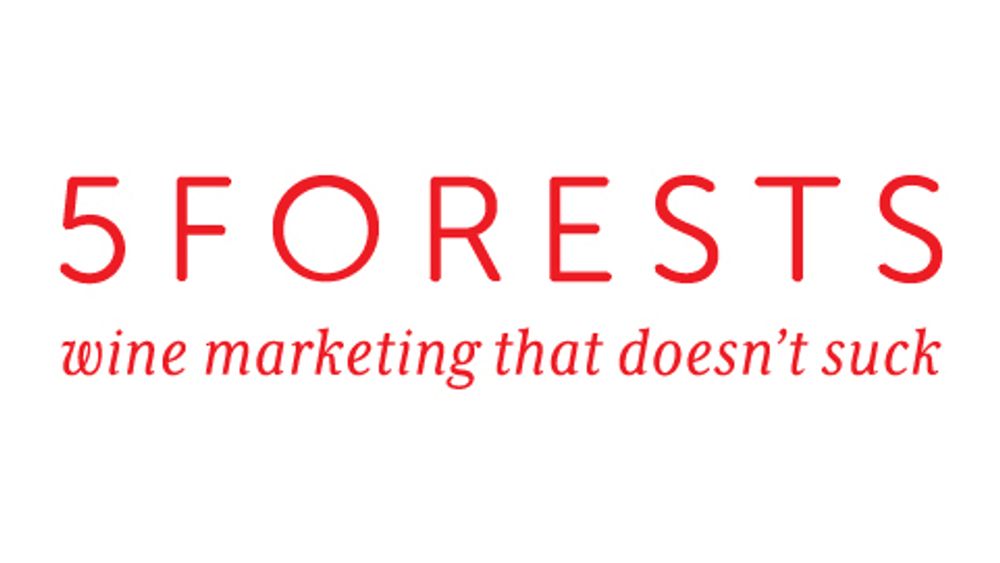The One Step Beyond conference on March 4, organised by The Buyer and Sophie Jump, will challenge the drinks industry to put technology at the heart of its future growth. But Joe Fattorini warns it’s vital any business also invests in helping its people understand how and why new technology can help them and how best to implement it in the most effective way.
The One Step Beyond conference will astonish you with the power and potential of new technology. To new trends and innovations across the drinks business. You will be excited. You will want to dive in. You’ll want to start work on it tomorrow.
But how do you introduce tech into your business successfully? “One problem with [wine tech] is that too many wine companies look to tech as some sort of miracle salve [Instead of] a continual build towards a Gestalt business”. That’s Paul Mabray, one of the headline speakers at the One Step Beyond conference, chief executive of Emetry and wine digital futurist. He should know. He’s the person responsible for successfully transforming tech in wine companies.

US pilot John Boyd did much for how businesses as well as fighter pilots thought
“People, ideas, machines — in that order!” is a quote from Colonel John Boyd, a US Air Force pilot and military strategist. Boyd would bark “People, ideas, machines — in that order!” at audiences as he applied his military thinking to businesses, the law and beyond. He knew success with new technology does not come from the technology. It comes from the intersections between technology and people, the ideas of those people, and the organisations and businesses they belong to.
Failure also lies in those intersections. The Harvard Business Review examined 1,471 IT projects “comparing their budgets and estimated performance benefits with the actual costs and results”. Costs overran by an average of 27%. No surprise. But that modest average hid a “fat tail” of “gigantic overages”. One in six projects had a cost overrun of over 200% and schedule overruns of over 70%. Tech projects in businesses are disproportionately likely to have devastating cost and schedule overruns.
Pitfalls of ‘biztech’
You’ll walk out of One Step Beyond with tech and trend #FOMO. Excellent. The last time wine led the world in innovation was Sir Kenelm Digby’s wine bottle in the seventeenth century. But remember. Digby’s wine bottle led to changes in the ways wine was moved. The way it was sold and branded and produced and perceived by customers. Businesses stumbled and fell on the way. Wine biztech can innovate. And it can crush.
So how can you avoid stumbling? “[T]he transfer of an entirely new and quite different framework for thinking about, designing, and using information systems … is immensely more difficult than transferring technology.” That’s Robert Taylor, one of the people most responsible creating the internet and personal computing. In other words, working with AI, CRM, VR, or social media, or app-based sales technologies is much easier than developing the skills to think about them and use them.
Six steps to take
What we need to develop are new skills for thinking about the tech, trends and innovations. Here are half a dozen.
1 Red Teams and Pre Mortems

Before investing in high-tech make sure you really know what and why you are doing it, warns Fattorini
First, steer clear of failure with Red Teams and pre-mortems. It is possible to understand what went wrong with tech failures after the event. There are entirely predictable issues. Yet nobody predicts them. That’s what Red Teams and Pre-Mortems do.
One Step Beyond will make you excited about getting stuck into a project. But pay someone to be excited about avoiding it. That’s a Red Team. A devil’s advocate. Someone – or some people – incentivised to persuade you it’s a bad idea and put your money and time elsewhere. To tell you why you shouldn’t. You’ll see the problems now and can plan around them. Or maybe choose to invest your money and time elsewhere.
A Pre-Mortem is a little different. Imagine the project failed. Work out why. Look at the (imaginary) failed project and work out what could have saved it.
2 Bring in an accountant
Second, bring in your accountant. We have lots of data on tech projects. Your business needs to be financially strong enough to see your largest IT project go over budget by at least 400%. And to give you only 25% to 50% of the forecasted benefits. Even smaller projects can have huge consequences. As a rule of thumb, plan for 15% of your smaller tech projects to exceed their costs by 200%.
3 New ways of thinking

A new tech project is like the Tower of Babel, says Fattorini
Third, open your mind to other ways of thinking. A tech project is a Tower of Babel. And each language brings a different view of the world. Accountants talk in numbers. CEOs in strategy and goals. Managers in tactics and functionality. Then Project managers and coders in Dependency Graphs and mature code libraries. Each language imposing its own weltanschauung from a different level of the Tower.
Listen to experts in wine tech. Then look to the expertise of small and medium sized businesses like yours who’ve introduced wine tech. And look to your own world view. Your business is evolving. Incorporating tech is changing it. Your thinking must change with it. Superforecasting, the art and science of prediction by Philip Tetlock and Dan Gardner is an excellent place to start. A primer on more rational thinking and making better predictions.
4 Use checklists
Fourth, start using checklists and borrowing other peoples’ checklists too. It’s no accident that Colonel Boyd, our strategist, came from the Air Force. Pilots were the first to recognise that the volume and complexity of our knowledge has exceeded our ability to consistently deliver it, correctly, safely or efficiently.
Boyd’s famous OODA Loop was an early form of checklist in the way the mind worked. It helped pilots observe and react to unfolding events more rapidly than their opponent. Now we use it to observe and react to unfolding events where our “opponent” is project failure. Checklist thinking moved from aeroplanes to hospitals as they moved from medicine that was eminence-based to evidence-based.
Surgeon Atul Gawande captured the extraordinary power of checklists in The Checklist Manifesto. This gives you a vital toolkit when you’re introducing complex tech.

Also look up Charlie Munger’s checklists for rational investing and better thinking. The vice chairman of Berkshire Hathaway is on a “constant search for better methods of thought.” His 10 guiding principles are more than a series of boxes to tick. They’re a daily reorientation when you’re introducing something radical to your business. To keep you focussed and rational when faced with complexity and new challenges.
5 Communications as a science
Fifth, start to rethink communication as a science, not an art. Much of the tech that will transform our industry involves communicating to drinkers, customers and each other. We’re taught about words in school in an arts-oriented syllabus that looks at beauty, form, and style. But in tech we’re interested in what works. What inspires people to buy. What persuades them to click.
Copywriter Andy Maslen worked with a neuroscientist to understand brain anatomy and “the reason-defying power of human emotions”. Too much wine and drinks commercial communications is based around what we feel we ought to say. It should be based on what works. What sells. What could sell better. Maslen’s book “Persuasive Copywriting” gives psychological copywriting techniques and real-world exercises drawing on the latest understanding of brain science.
Tech and comms project always involve some sort of feedback. They only succeed if customers click. Glen Fischer’s The Art of the Click will give you old-fashioned techniques from Direct Mail, updated for digital media. How you can embed words and phrasing with persuasive power into AI, VR, Social Media or any other tech innovation.
6 Executive buy-in
And finally, what Paul Mabray of Emetry calls “the most fundamental three exercises in tech adaption and adoption… [T]he most essential” he says is “executive [and] cultural buy-in. Especially executive.”
Mabray recommends Building Dragons: Digital Transformation in the Experience Economy which explains how established companies can “leverage their original start-up mentality to systematically innovate their way to profitability”. Then he says “treat the tech objective not as a project, but as a business pillar that will require continual attention and upkeep”.
He cites the example of a new website. “It requires continual maintenance, upgrades, changes and so on. The same for CRM”. And finally “tie the tech project to a distinct business outcome”. But Mabray notes these should be short and long term. But as they move further out, the nature of the outcome must change. Rather than tie long-term outcomes to highly specific predictions, use cone timelines to account for the inherent uncertainty.
All these things will cost you money. The people you’ll have to consult will cost you money too. More money than you thought you were going to spend. But the alternative is even more expensive. It’s trying to find someone who’ll insure your entire business for a one in six catastrophic loss. It’s better to start with people, ideas, machines. In that order.
- The One Step Beyond 2020 conference is being organised by The Buyer, Sophie Jump in association with the Wine & Spirit Trade Association. Its main platform partner is Emetry and it is also being supported by 5 Forests, a marketing and comms specialists. It will include specialist talks on breakthrough technologies such as voice and augmented reality from technology experts and examine what impact they are having on e-commerce, the subscription and experience economy and traditional retailing. Top industry figures will then assess how best to implement and make the most of these disruptive technologies in the drinks industry. The event takes place at The Other Palace Theatre, 12 Palace Street, London SW1E 5JA between 9.30am to 5pm on March 4. It will also include a drinks reception sponsored by Freixenet Copestick.
- Tickets are available priced at £195 per person (plus VAT). Places are limited to 100 people so early booking is vital. To register click here.




































